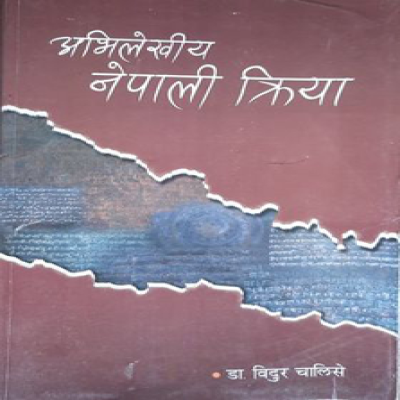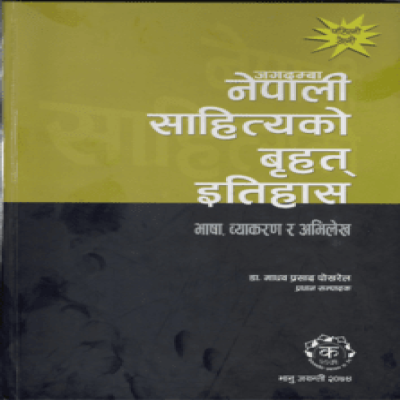Nepali Language Research :
Research papers From the records of Bamu Khadka of 1151 B.S. Various records written in
Ancient
Nepali language such as copperplates, Kanakpatras, inscriptions, banquet papers, silver
letters,
donation letters, charters and historical letters published in Nepali language up to Prithvi
Narayan Shah's Divyapodesh in 1831 have been studied.
In addition, the language grammar used in those materials has been studied and researched.
The
grammar of ancient and medieval Nepali language has been evaluated in terms of the
historical
identity of grammatical units used in modern Nepali grammar and their gradual development,
the
disappearance or arrival of historical facts in Nepali grammar. In the book, which is a
research
book on "Archival Nepali Verbs", the verbs used in the ancient and medieval Nepali language
are
presented in a comparative manner. In the research book of "Historical Nepali Verbs", the
identification and use of words such as Nipat, Samyojak, Namayogi (Parasthanik), Kriyayogi
and
Abyaya, used in the ancient and medieval Nepali language, and their historical gradual
development and use have been looked at.
Similarly, in the research book "History of Archival Nepali grammar", the gradual
development of
the entire lexical unit of ancient and medieval Nepali grammar, the linguistic names of the
ancient and medieval language, the state of linguistic development of that language and the
various conditions, problems and opportunities of the expansion of the Nepali language in
the
ancient and middle ages are evaluated. It has been done, 458 records written in Nepali
language
have also been included.
In Jagdamba Nepali Sahityako Itihas has been included in the language, grammar and records
of
the first volume of the comprehensive history. The book, which is a research book on
"Archival
Nepali Namdhatu", gives clear historical information about the Ancient Nepali language, how
the
names used in the ancient and medieval Nepali language have played the role of verbs, and
the
process of forming Namdhatu in ancient and medieval times.
Overall, these four books provide information about the historical aspects of Nepali
language
grammar as well as being the starting point of modern Nepali grammar. All the facts obtained
in
this grammar are the conclusions drawn by studying and researching the written language
written
by the contemporary thinkers, writers and illustrators. Since these facts of historical
grammar
are true and immediate facts, these books on the history of Nepali language grammar provide
information in a factual manner to the full curiosity of the history of Nepali grammar.



